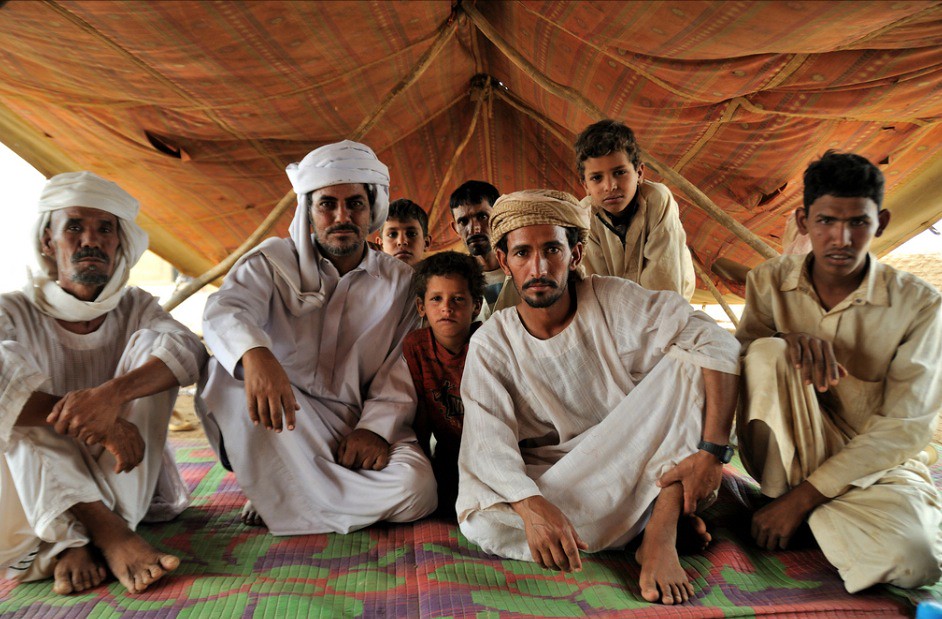Recent Developments for Renewable Energy in Saudi Arabia

“You either get ahead [of changing weather patterns] or you are going to be buried by it,” suggested Saudi Arabia’s Climate Change Envoy at the COP27 conference in December 2022. This underscored the continued push toward renewable energy in Saudi Arabia as part of its Vision 2030 plan. Despite possessing around 17% of the world’s petroleum reserves, Saudi Arabia has considered diversifying its energy mix through investments in green technology and using its natural abundance of wind and sunlight. However, levels of crude oil production currently remain unchanged.
Saudi Arabia’s Circular Carbon Economy
The Saudi government is promoting a “circular carbon economy” — where actions offset carbon emissions rather than reducing output. The Kingdom set up the National Renewable Energy Program (NREP) to facilitate the pursuit of these goals. Through NREP, the Saudi government plans to transition 50% of its domestic energy supply to renewable sources by 2030. The government conceived the Saudi Green Initiative (SGI) as a framework for the Kingdom’s “green transition,” in line with the core aims of Vision 2030. The initiative seeks to:
- Increase the percentage of renewable energy in Saudi Arabia’s domestic energy mix.
- Reduce the country’s carbon emissions by more than 278 megatons per annum.
- Help cut global methane emissions by 30% before 2030, in accordance with the Global Methane Pledge.
The SGI includes plans to plant 10 billion trees and restore 40 million hectares of degraded land over the coming decades as well as increase the size of the country’s protected wildlife and coastal areas. In terms of the expansion of renewable energy in Saudi Arabia, the Kingdom seeks to harness the power of its natural resources, utilizing infrastructure funded through a mixture of public and private sector investment.
Solar energy, the centerpiece of Saudi Arabia’s energy transition, has become increasingly important to the country’s domestic energy supply in recent years. The cost of solar power production decreased by around 90% over the last decade, making it a cheaper alternative to oil. As part of the Kingdom’s plans to install 41 gigawatts of solar capacity by 2032, new solar farms such as the Sakaka Solar Power Plant are being built. Sakaka, which opened in April 2021, uses photovoltaic energy to generate electricity, boasting 1.2 million solar panels over 6 square kilometers of land. The site’s 300-megawatt capacity is enough to power 44,000 houses. Additionally, the solar farm holds the world record for the lowest cost in the photovoltaic energy sector.
Wind energy, another locally abundant resource, is supplementing this solar push. The first wind farm in Saudi Arabia, the Dumat Al Jandal wind farm, was connected to the national grid at the end of 2021 and began producing energy. It is the largest wind farm in the Middle East. Like Sakaka, Dumat Al Jandal is one of many similar wind projects. It has the ability to power up to 70,000 households.
Recent Developments in Saudi Arabia’s Climate Plans
In September 2022, Saudi Arabia announced the launch of five new renewable energy projects: three wind projects and two solar projects. These projects are part of NREP and will have a total capacity of 3,300 megawatts. At COP27, Energy Minister Prince Abdulaziz announced three more projects plus a greenhouse gas credit scheme for 2023 and the creation of a “Circular Carbon Economy Knowledge Hub.” The hub aims to foster international collaboration in circular carbon technology and facilitate the sharing of information and best practices by state- and private-sector actors.
Criticisms of Saudi Arabia’s Climate Initiatives
There are a number of critics of Saudi Arabia’s climate plan, particularly its plan for a circular carbon economy. The world authority on energy, the International Energy Agency, stated oil and gas investments must stop immediately if the world is going to reach net-zero carbon emissions by the year 2050. This statement contradicts the premise of a circular carbon economy.
There are also concerns about the practicality and economic viability of the carbon capture technology that the Saudis are currently promoting on a large scale. Climate activists suggest that the push toward renewable energy in Saudi Arabia is a superficial attempt to “greenwash” the country’s reputation, meaning mislead the public into thinking something is good for the environment when it is not, rather than address the real issues. In an interview with Al Jazeera, Matthew Archer, a researcher at the Graduate Institute Geneva, called the circular carbon economy plan “dangerous and delusional.”
Climate Initiatives and Job Creation
Regardless of whether Saudi Arabia’s energy transition impacts changing weather patterns, the economic effects are clear. According to the U.S.-Saudi Arabian Business Council, the Kingdom’s renewable energy sector could generate up to 750,000 jobs by 2030 as long as it remains a priority. The government plans to localize the sector with the aim of 40-45% of the workforce consisting of Saudi nationals by 2028. For example, 97% of Sakaka’s employees are Saudi Arabian, allowing for employment for locals with a range of skill levels.
Financial commitments, large-scale initiatives, and the construction of wind and solar farms across the nation show commitment to renewable energy. In Saudi Arabia, however, it is still too soon to tell whether the policies will be effective.
– Thomas Everill
Photo: Flickr
